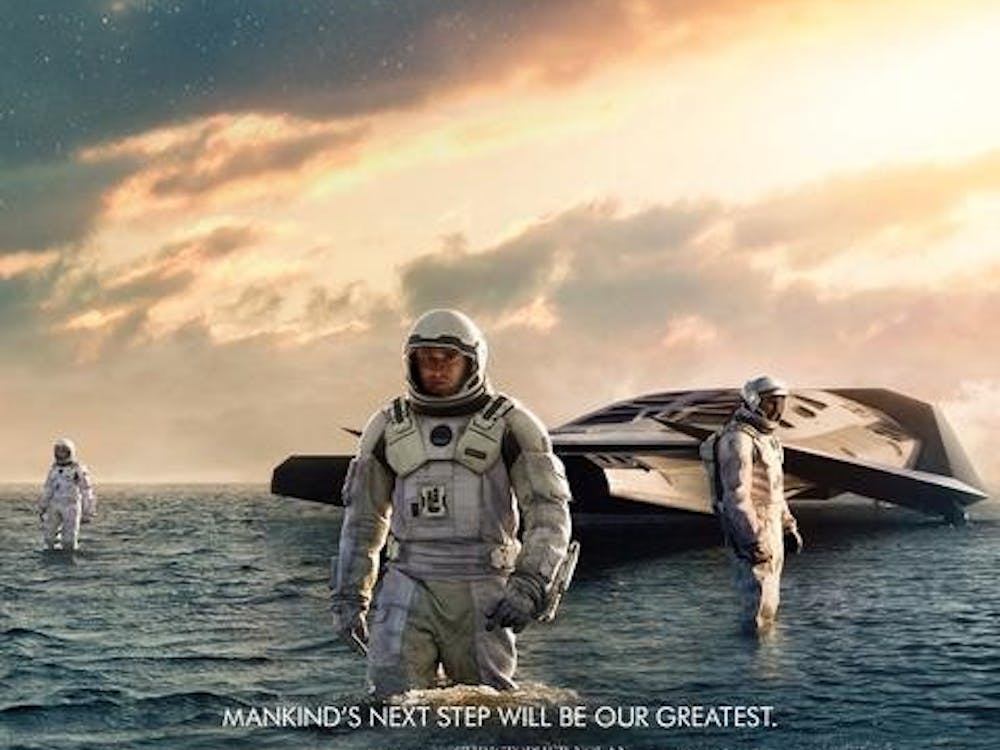The thunderous sounds of a typical NASCAR race are unforgettable for anyone who has seen a race on television or live at a stadium. The excitement of watching cars drive around the track at almost 200 mph is lost on some, but for others it almost has become a religion.
National Association of Stock Car Auto Racing (NASCAR) is the subject of the latest IMAX phenomenon, "NASCAR 3-D: The IMAX Experience." However, the film's primary purpose seems to be the education of the general public.
Not that that's a bad thing. The film deals with all possible aspects of NASCAR racing, so even NASCAR enthusiasts might learn a thing or two. Director Simon Wincer, the man who created the "Lonesome Dove" miniseries, now brings us a film that draws everyone to the sport, NASCAR fan or not.
The script, written by Sports Illustrated NASCAR correspondent Mark Bechtel, is typical documentary fare, with interviews, stock footage and a lot of factual information (though not enough to be overwhelming).
The first half of the movie deals largely with the history of NASCAR. The movie opens with a dramatized chase through the North Carolina wilderness, thus setting up the evolution of the sport that would eventually become NASCAR.
Following the discussion of the 1947 conference that laid the foundations of NASCAR, the film goes on to introduce some of the (relatively) early NASCAR greats: Junior Johnson, Lee Petty, Richard Petty, Kyle Petty, Darrell Waltrip and, of course, Dale Earnhardt.
Yes, they do have footage from the 2001 race that killed NASCAR's greatest star. Though they don't actually show the crash, they do make reference to it. Anybody watching the film with a more-than-mild interest in NASCAR had better expect an emotional reaction.
The crash serves as a bridge linking the first half of the movie to the second half: how NASCAR Works.
This film navigates the intricacies of NASCAR madness -- from engineers in garages building car frames and engines to pit crews training 38 weeks out of the year.
The film discusses the importance of teams, how a typical race works and even what the fans are like. People that know nothing about NASCAR will learn a lot from this film.
What makes the film different from the typical documentary is its technical aspects. "NASCAR 3D" makes the most of IMAX technology. "NASCAR 3-D" is one of the few IMAX movies that have the IMAX specs right on the poster.
The film's remarkable cinematography draws you right into the action. Cars zoom past cameras placed on the track. Cameras inside the car allow you to see what the driver sees. Aerial shots show exactly what a mob of 120,000 people looks like. The list goes on.
The editing job is top notch. Rapid editing shows that there is a lot more going on in the race than cars racing around a track. An impressive sequence where stock footage of a crash is repeated all over the screen can best be described as awe-inspiring.
The IMAX sound technology is put to good use. The sound of roaring engines is strong enough to rumble the seats. Good luck in finding that same effect in movie theaters.
However, there is a surprisingly large amount of relatively quiet moments in the film, so the rumble effect isn't used that often. This isn't actually that bad. After all, there is probably a limit to how much a person can stand to be vibrated.
The technological strengths of this movie make up for the blandness of the screenplay, making "NASCAR 3D" one of those rare documentaries that can keep viewers interested the whole way through.
If you're already a NASCAR fan, then "NASCAR 3-D" is probably near the top of your must-see list. I suppose it's safe to say that the film will live up to nearly all NASCAR fans' expectations. If you're not a fan, then "NASCAR 3-D" is still a worthy piece of entertainment.
The problem for most people around the country is finding a theater that plays it. Fortunately, that really isn't a problem for us.
There are only 75 IMAX theaters in North America carrying "NASCAR 3D," and three of them are in the state of Virginia. The entire theater list can be found on the IMAX website.
A word of warning: if you see the movie at the Steven F. Udvar-Hazy Center in Chantilly, Va., then prepare to suffer through a three-minute short presenting the merits of IMAX that borders on seizure-inducing.






